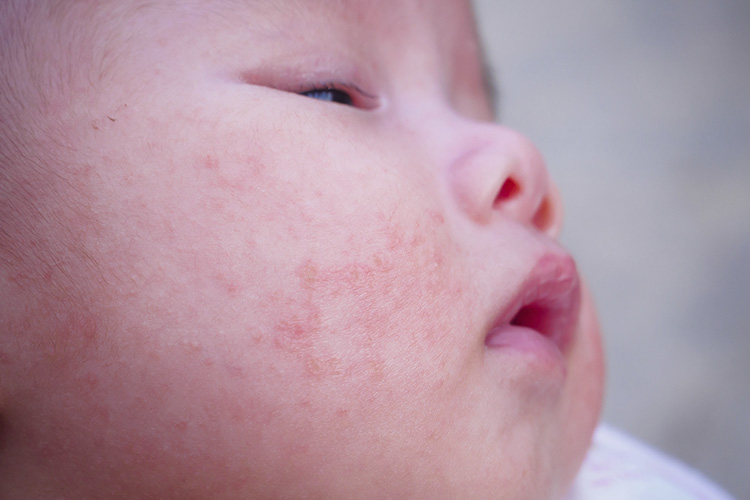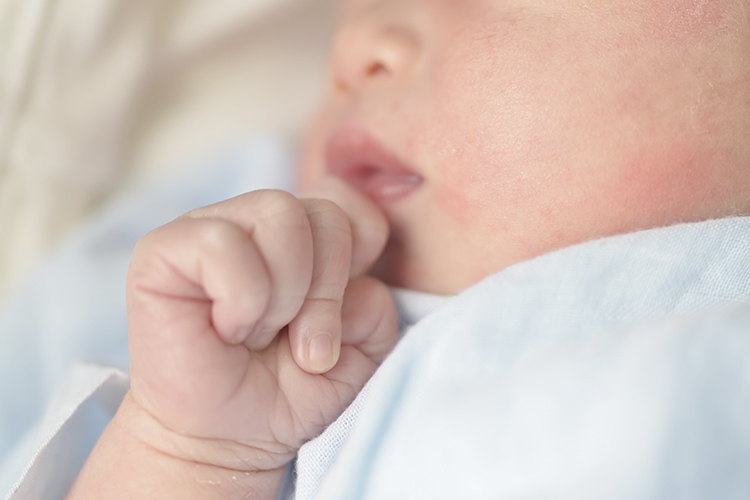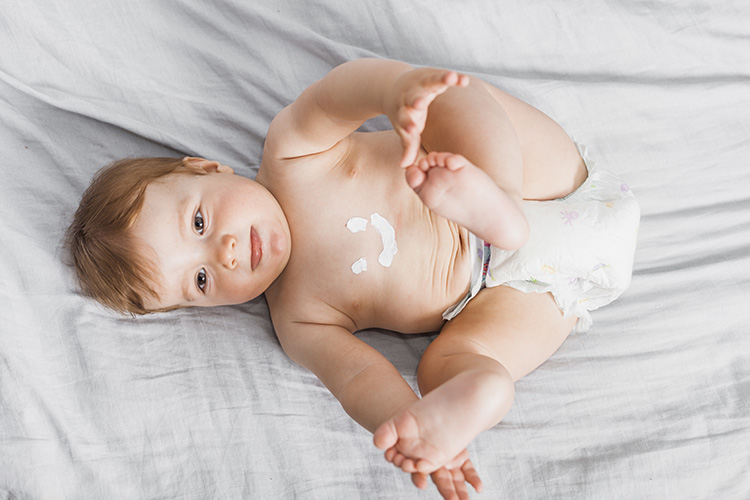Baby Eczema Don't Panic! Showing You How To Differentiate And Care For Baby
1. Types of childhood eczema
Frequently, children with atopic dermatitis also have asthma and hay fever, a combination sometimes known as the “atopic triad.” The rash from atopic dermatitis can be lighter or darker than normal skin color, and it often forms at the creases of elbows and knees.
As the name implies, contact dermatitis results when a substance touches your child’s skin. There are two subtypes. Allergic contact dermatitis triggers an immune system response, while irritant contact dermatitis immediately affects the skin. A rash from contact dermatitis may produce itchy bumps called hives, and skin in the area can become thick and scaly.

Also known as “cradle cap,” seborrheic dermatitis affects areas of the skin with lots of sebaceous glands that produce the skin oils that provide a protective layer on the skin. The back, nose, and scalp are the most commonly affected areas, but it can also form lower on the face, in the diaper area, and in various folds around a baby’s body. Skin rashes include a yellow crust along with red skin, or there may be white or yellow flakes. Cradle cap usually vanishes around the age of six months, but dandruff might continue even into adulthood.
Blisters on the soles of the feet and palms of the hands identify dyshidrotic eczema. These blisters can be itchy, and large blisters occasionally form, which are often more painful. After the blisters pass, affected skin can feel dry and spongy. This skin condition seems to be connected to seasonal allergies. Children can develop this type of eczema, but it’s usually more common in adults, with women affected more often than men.
2. Causes of baby eczema

3. How to treat baby's eczema
· Daily bathing and moisturizing is key to treating baby (infantile) eczema (atopic dermatitis). Use a mild cleanser and warm water. After a bath of no more than 15 minutes, rinse completely, gently pat your baby dry and apply a fragrance-free cream or ointment such as petroleum jelly, while the skin is still damp. Moisturize at least twice a day, perhaps at diaper changes. When trying a new moisturizer, test it on a small area of the child's skin first to make sure it's well-tolerated.
· Baby eczema signs and symptoms may also be eased by avoiding irritants — such as itchy fabric and harsh soaps — as well as extremes in temperature. To prevent your child's scratching the rash, it may help to keep your baby's nails clipped short or to put on cotton mittens during sleep.
· Have your baby examined if the condition persists or the rash is purple, crusty and weepy or has blisters. A child who has a fever and rash may also need evaluation. Talk with your doctor about using a medicated cream or ointment or trying bleach baths to ease symptoms. Use medications and bleach baths with the guidance of your pediatrician.
